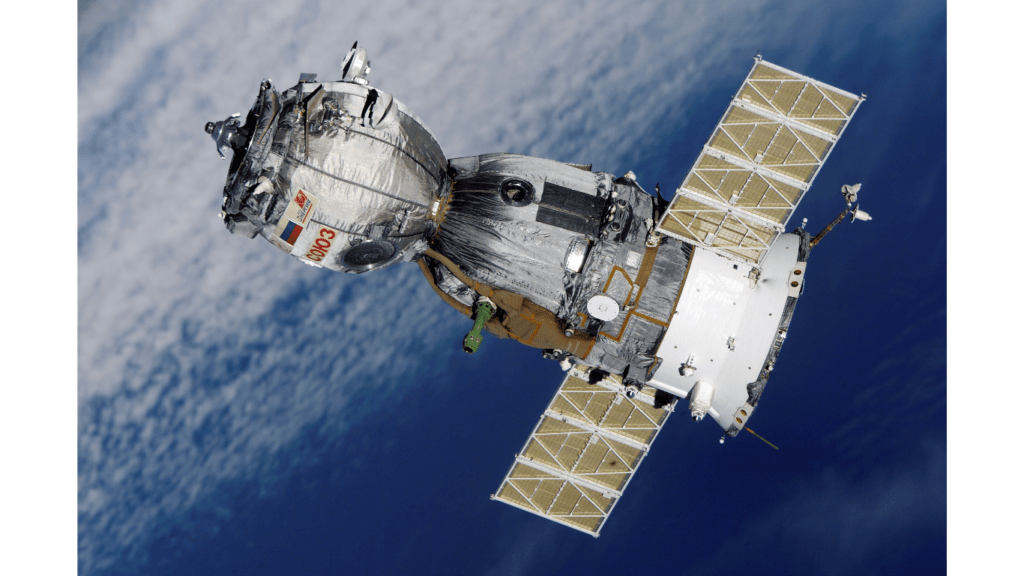A New Era of Space Exploration
The Moon as a Stepping Stone
- Exploring the Moon has become a crucial stepping stone in the new age of space exploration. It presents an exciting opportunity for countries to showcase their technological prowess and scientific capabilities. The Moon serves as a testing ground for new technologies before embarking on more ambitious missions to distant planets like Mars.
Pushing Forward to Mars
- As we set our sights on Mars, the next frontier in space exploration, the challenges and possibilities grow exponentially. Advancements in propulsion systems, life support technologies, and mission duration capabilities are key areas of focus in preparing for crewed missions to the Red Planet. With each successful mission, we edge closer to realizing the dream of human settlement on Mars.
The Main Contenders in Today’s Space Race
- As I delve into the current landscape of space exploration, it’s fascinating to witness the intense competition among the leading contenders in the Space Race of today. Each player brings unique strengths and ambitions to the forefront, shaping the future of human exploration beyond Earth.
NASA’s Artemis Program
- Venturing into the realm of lunar exploration, NASA’s Artemis Program stands out as a beacon of American innovation and ambition. With a focus on sustainable lunar exploration, Artemis aims to land the first woman and the next man on the Moon, paving the way for future crewed missions to Mars. The program encompasses cutting-edge technologies, international collaborations, and a vision for long-term lunar presence, marking a significant milestone in space exploration history.
China’s Lunar Ambitions
- On the other side of the globe, China emerges as a formidable contender in the global space race with its ambitious lunar missions. The Chang’e series of missions demonstrate China’s prowess in lunar exploration, including successful landings on the Moon’s surface and plans for future missions to establish a lunar research station. China’s strategic lunar ambitions not only showcase technological advancements but also signify its growing influence in shaping the future of space exploration beyond Earth’s confines.
SpaceX’s Mars Vision
- In the realm of interplanetary exploration, SpaceX, led by visionary entrepreneur Elon Musk, presents a bold vision for human settlement on Mars. Through initiatives like the Starship spacecraft and the Mars colonization plan, SpaceX aims to revolutionize space travel and establish a sustainable presence on the Red Planet. With a focus on reusability, affordability, and ambitious timelines, SpaceX’s Mars vision redefines the boundaries of human exploration and envisions a future where humanity becomes a multi-planetary species.
- As I reflect on the endeavors of these main contenders in today’s space race, I am filled with optimism for the future of space exploration. Each mission, innovation, and breakthrough brings us closer to unlocking the mysteries of the cosmos and realizing our human potential beyond the confines of Earth.
Key Technologies Defining the Race

1. Advanced Propulsion Systems
In the competitive landscape of space exploration, cutting-edge propulsion systems play a vital role in achieving ambitious missions to the Moon and Mars. I’ll delve into the intricate technologies driving these missions.
Ion propulsion, like that used in NASA’s Dawn spacecraft, offers efficient fuel consumption, enabling prolonged missions with greater distances covered. Nuclear thermal propulsion, with its high thrust and specific impulse, is a potential game-changer for expeditions to Mars due to its superior efficiency over conventional chemical propulsion.
2. Life Support and Habitat Development
The sustainability of human life in space environments hinges on robust life support systems and innovative habitat solutions. Let’s explore the advancements that are reshaping the future of space habitation.
Closed-loop life support systems, such as those on the International Space Station, recycle air, water, and waste, reducing dependency on Earth for vital resources. Bio-regenerative life support systems, incorporating biological processes for recycling, mimic Earth’s ecosystems to sustain astronauts on long-duration missions like those planned for Mars.
3. Robotics and Autonomous Systems
Robotic technologies and autonomous systems are revolutionizing space exploration, enhancing mission capabilities and reducing human risk. Here, I’ll shed light on the pivotal role of robots in the Space Race Revived.
Autonomous rovers, such as NASA’s Curiosity and Perseverance, conduct intricate tasks on distant planetary surfaces, gathering crucial data without direct human intervention. Swarm robotics, like those envisioned for future lunar colonies, offer collaborative capabilities for resource utilization and infrastructure development, paving the way for sustainable extraterrestrial settlements.
Collaboration vs. Competition
The Role of International Partnerships
- Exploring space is not just a mission for a single nation; it’s a collaborative endeavor that transcends borders. International partnerships play a crucial role in advancing space exploration, pooling together resources, expertise, and technology from various countries. I’ve witnessed firsthand how alliances like the International Space Station (ISS) have fostered cooperation among nations, paving the way for joint missions to the Moon and Mars. The combined efforts of different countries ensure that space exploration is a global effort, leveraging diverse perspectives and capabilities to achieve monumental milestones.
The Rise of Private Sector Involvement
- In recent years, the space industry has witnessed a significant transformation with the emergence of private sector players actively participating in space exploration. Companies like SpaceX, Blue Origin, and Virgin Galactic are reshaping the landscape of space travel with ambitious missions to the Moon and Mars. I’ve observed how these private entities bring innovation, efficiency, and competition to the space race, driving rapid advancements in technology and lowering the costs of space missions. The partnership between government space agencies and private companies marks a new era of space exploration, where collaboration and competition converge to accelerate humanity’s journey beyond Earth.
Challenges and Controversies
1. Economic Implications
Exploring space, especially missions to distant celestial bodies like Mars, requires substantial financial investments. The cost of developing advanced technologies, building spacecraft, and supporting human life in space poses significant economic challenges. As technologies evolve and space missions become more frequent, finding sustainable funding sources will be crucial. Balancing the economic costs with the potential long-term benefits of space exploration is a complex issue that space agencies and private companies must navigate to ensure the viability of future missions.
2. Ethical Considerations of Space Colonization
The prospect of establishing colonies on other planets raises ethical dilemmas. Issues such as resource allocation, governance structures, and potential conflicts over territorial rights need careful consideration. Questions of inclusivity, equitable access to space resources, and the preservation of extraterrestrial environments for scientific research also come to the forefront. As we venture into space colonization, ethical frameworks must be established to address these complex moral challenges and ensure responsible and sustainable expansion beyond Earth.
3. Environmental Concerns of Space Missions
Space missions have environmental impacts that must be addressed. From rocket launches releasing greenhouse gases and pollutants into the atmosphere to space debris posing a threat to Earth’s orbit, space exploration has implications for our planet. As the frequency of space missions increases, so do concerns about sustainability and the long-term consequences of human activities in space. Developing eco-friendly propulsion systems, minimizing space debris, and implementing sustainable practices in space exploration are essential to mitigate the environmental footprint of future missions and safeguard the space environment for future generations.























































































































































































































































































































































































































































































































































































































































































































 Paulina Evansonic is a visionary journalist and media entrepreneur who founded Whisper Wagon Wire, a leading platform renowned for its exclusive insights into top stories, world news, science, technology, and home trends. With a passion for uncovering the truth and a keen eye for detail, Paulina has dedicated her career to providing readers with in-depth, accurate, and engaging content.
Paulina's journey in the media industry began with a strong academic background in journalism and communication. Her early career was marked by her work as a reporter and editor for various prestigious publications, where she honed her skills and developed a reputation for her investigative prowess and commitment to quality reporting.
Driven by a desire to create a more holistic and accessible news source, Paulina launched Whisper Wagon Wire. Under her leadership, the platform has grown to become a trusted name in journalism, known for its balanced reporting and insightful analysis. Paulina's innovative approach has not only elevated the standards of news media but also inspired a new generation of journalists to pursue excellence in their work.
Through Whisper Wagon Wire, Paulina continues to influence the media landscape, ensuring that readers stay informed about the most important developments around the world. Her dedication to truth and transparency remains at the core of her mission, making her a respected and influential figure in the field of journalism.
Paulina Evansonic is a visionary journalist and media entrepreneur who founded Whisper Wagon Wire, a leading platform renowned for its exclusive insights into top stories, world news, science, technology, and home trends. With a passion for uncovering the truth and a keen eye for detail, Paulina has dedicated her career to providing readers with in-depth, accurate, and engaging content.
Paulina's journey in the media industry began with a strong academic background in journalism and communication. Her early career was marked by her work as a reporter and editor for various prestigious publications, where she honed her skills and developed a reputation for her investigative prowess and commitment to quality reporting.
Driven by a desire to create a more holistic and accessible news source, Paulina launched Whisper Wagon Wire. Under her leadership, the platform has grown to become a trusted name in journalism, known for its balanced reporting and insightful analysis. Paulina's innovative approach has not only elevated the standards of news media but also inspired a new generation of journalists to pursue excellence in their work.
Through Whisper Wagon Wire, Paulina continues to influence the media landscape, ensuring that readers stay informed about the most important developments around the world. Her dedication to truth and transparency remains at the core of her mission, making her a respected and influential figure in the field of journalism.
